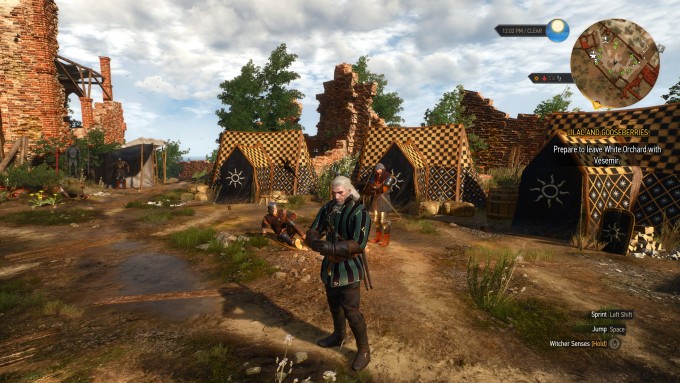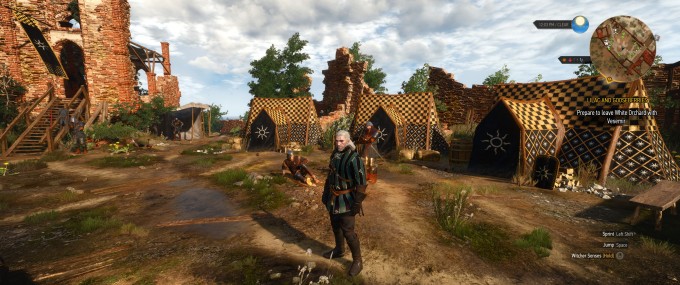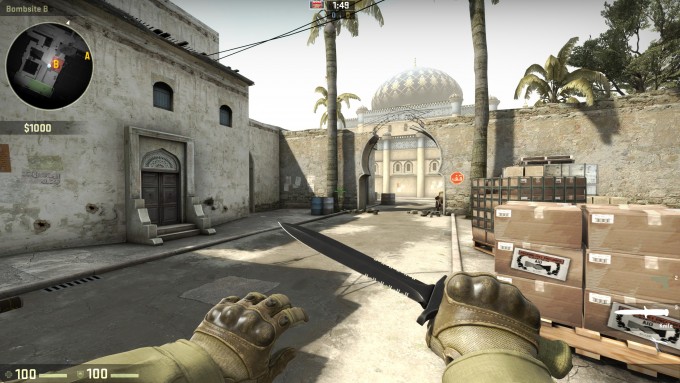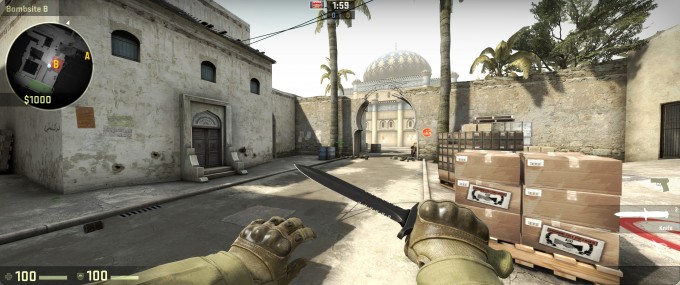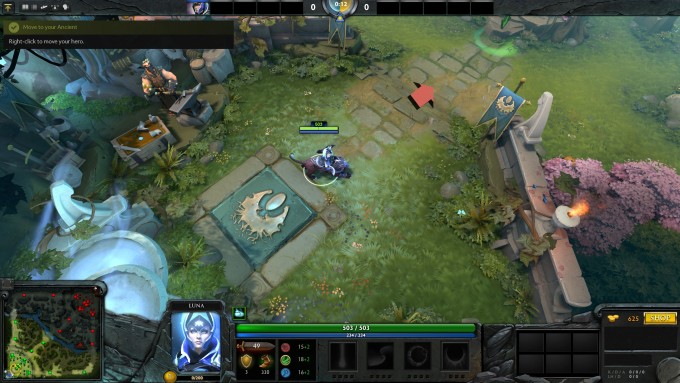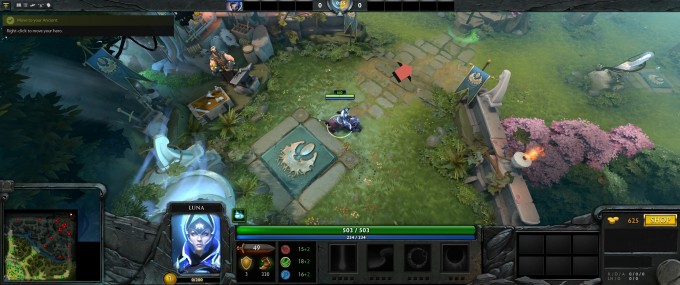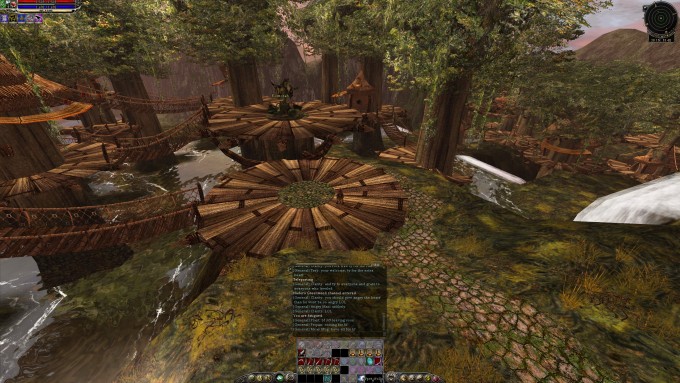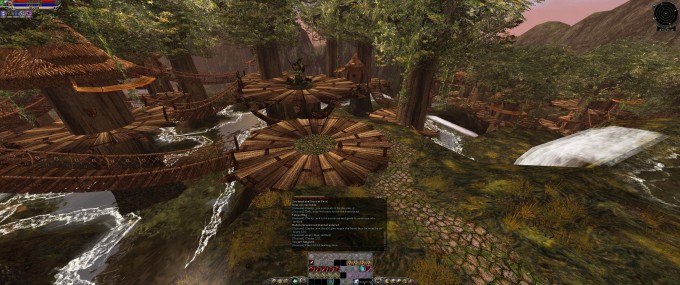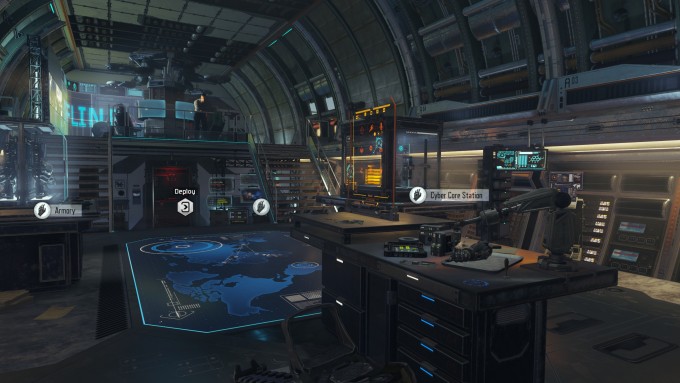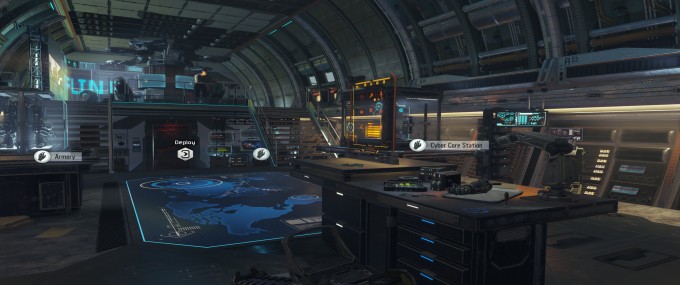- Qualcomm Launches Snapdragon 4 Gen 2 Mobile Platform
- AMD Launches Ryzen PRO 7000 Series Mobile & Desktop Platform
- Intel Launches Sleek Single-Slot Arc Pro A60 Workstation Graphics Card
- NVIDIA Announces Latest Ada Lovelace Additions: GeForce RTX 4060 Ti & RTX 4060
- Maxon Redshift With AMD Radeon GPU Rendering Support Now Available
Acer Predator X34 Curved G-SYNC Gaming Monitor Review

On the lookout for a gaming monitor that can do it all? If price isn’t a concern, Acer’s Predator X34 is the one to look at. It comes in at 34 inches, boasts a 3440×1440 ultra-wide resolution, makes images pop with an IPS panel, takes advantage of NVIDIA’s G-SYNC frame-smoothing technology, and if that’s not enough: it’s curved.
Page 3 – Ultra-Wide Gaming Benefits
Note: Comparison shots of ten different games (including the five below) can be downloaded here (21MB .zip). You can flick between the respective screenshots from each game to easily spot the differences (and potential problems) between them.
About six years ago, I penned an article that discussed the benefits of multi-monitor gaming. In it, I showed comparison screenshots between a bunch of games that spanned a handful of genres. The point I wanted to get across was that when the width increases more than the height in a monitor, it results in being able to see more in the game world (not just the same content, stretched).
Ahem – it’s time to have that discussion again. To understand the benefits, we just need to talk about aspect ratios. The Hollywood standard for movies is 16:9, which scales to a few common resolutions: 1080p, 1440p, and 4K (eg: 1920 / 16 = 120; 1080 / 9 = 120). Ultra-wide resolutions are the same height-wise, but are wider; eg: 2560×1080 and 3440×1440 are both 21:9. This is all simple math; the bigger the gap between the height and width, the wider the image.
So that brings us to an important point: what is the point? Well, at the desktop, a wider desktop means that there’s more room to work. In games, it means that, more often than not, you see more of the game world.
Given all that I’ve seen over the years from multi-monitor gaming, whether or not a game engine will properly utilize wide resolutions is hit-or-miss. In some rare cases, an image won’t reveal more detail, but instead just stretch. Any game from the Call of Duty series will exhibit this behavior (some hacks exist to fix the issue in select versions). There’s no excuse for this, as I’ll show an example below of a game (Asheron’s Call 2) that was released 13 years ago that utilizes 3440×1440 just fine.
Those wanting a more in-depth comparison look, I’d recommend downloading the archive above. From that archive, I’ve chosen five games to highlight, to give an idea of the benefits and drawbacks.
The Witcher 3: Wild Hunt
The Witcher 3 is a shining example of a game that utilizes ultra-wide resolutions well. You can see above that when using the 3440×1440 resolution, a lot more detail can be seen on either side of the game field. Sometimes, the objects on the end views can be distorted (more common on multi-monitor since the width is even longer), but not here.
Counter-Strike Global Offensive
In the “Benefits of Multi-Display Gaming” article I wrote back in 2010, I said this about Counter-Strike: Source: “you simply see far, far more of the game world, and in a competitive game, that’s going to be rather important.” I was talking about multi-monitor there, but the same applies with ultra-wide and Global Offensive, as the above screenshots show.
You’re not losing detail here; you’re gaining it. In this particular example, if someone is hiding behind one of the boxes on the right or the alley on the left, you’d be able to see them in the ultra-wide resolution, but not the 16:9 one.
The Source engine has long been complementary towards wide resolutions, so the same revealing of the scene in the shot above would be matched in Half-Life 2, Portal 2, and even Dota 2. Speaking of…
Dota 2
Like CS: Global Offensive, Dota 2 handles ultra-wide monitors just fine. While ultra-wide in a game like CS: GO could add a certain advantage, it goes without saying that the advantage could be even stronger in Dota 2. It’d be hard to jump to the conclusion of calling it “cheating”, though, as ultra-wide monitors have even been used in competition.
It’s not cheating; it’s just better.
Asheron’s Call 2
Asheron’s Call 2 is going to be relevant to 0% of our readers, but I am including it for one good reason: it’s proof that a game engine doesn’t need to be designed for ultra-wide to work in ultra-wide.
AC2 was released in 2002, a time when most new monitors were 1280×1024. Back then, that felt like a major step up from 1024×768. Today, both resolutions make me cringe. Nonetheless, despite this game being old as dirt and being designed at a time with square resolutions, it’s quite something to see that it utilizes 3440×1440 without issue.
A couple of years ago, I tested the game with a 1080p x 3 configuration (5760×1080), but that was a bit too much; the game engine simply wasn’t designed to handle rendering at the super-strange ratio of 16:3. It seems 21:9 isn’t quite wide enough to cause those sorts of issues.
Call of Duty: Black Ops III
To help wrap things up, let’s tackle the worst game of the entire bunch when it comes to proper scaling: Call of Duty: Black Ops III. In the shots above, you can clearly see that the game makes no attempt to scale anything as it should; it merely takes a 16:9 image and stretches it. It actually doesn’t look so bad in action, but when comparing the two, it looks awful.
In the case of games like this, the best course-of-action is to just run the game at 2560×1440, which should just put black bars on both sides of the screen. For what it’s worth, consoles that are plugged into the display will behave the same way. In BO III‘s case, though, it will fill the entire screen even if a 16:9 resolution is checked, resulting in stretching.
Sticking to the trend followed by every Call of Duty before it, Black Ops III hates ultra-wide resolutions. And that’s too bad; even if the game is a so-called “console port”, it still looks amazing at max detail.
Support our efforts! With ad revenue at an all-time low for written websites, we're relying more than ever on reader support to help us continue putting so much effort into this type of content. You can support us by becoming a Patron, or by using our Amazon shopping affiliate links listed through our articles. Thanks for your support!




